With the iconic Mumbai cafe downing its shutters after 50 years, Ranjona Banerji believes that Kala Ghoda, which is celebrated as an art and heritage precinct, will lose a vital part of its essence
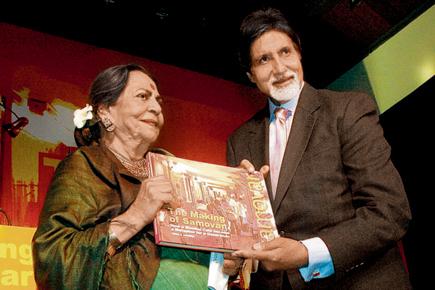
Usha Khanna and Amitabh Bachchan
What makes a city a city? No, don’t answer that if you’re going to be snarky and say “slums” or nouveau riche snobbish and say “gated communities”. And don’t even dare to answer if you think serial eating at international junk food chains makes
you cosmopolitan.
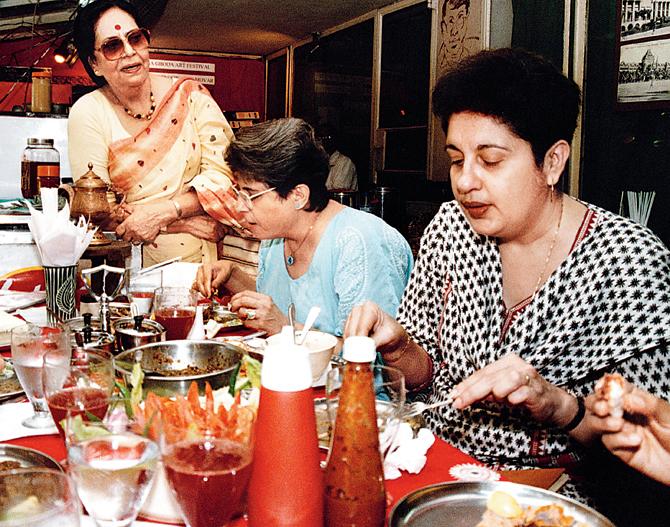
Usha Khanna, Meher Moos and Parwana Boga Noorani enjoy lunch
ADVERTISEMENT
So maybe, let’s ask the question in another way: What makes your city different from other cities. Now you get it. The little places, the hidden places, the ones only insiders know about, the places with character rather than glitz, the ones which charm and delight you. That’s what makes your city different.
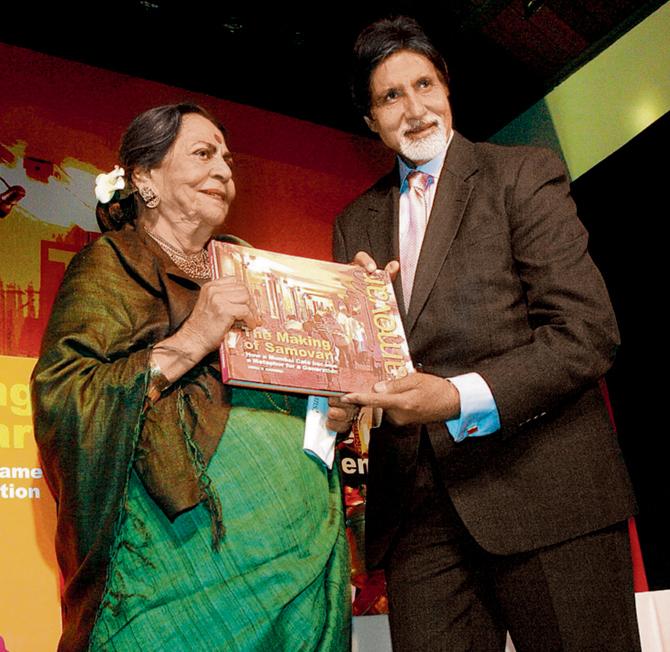
Usha Khanna and Amitabh Bachchan at the launch of the book, The Making of Samovar in 2007
The closing down of Samovar at the Jehangir Art Gallery after 50 years spells doom for the character of Mumbai. This is not faux nostalgia or maudlin sentimentalism or even hyperbolic hysteria. Samovar was a Mumbai symbol and part of the Mumbai continuum. It remained what it was for five decades — quirky, distinctive and delectable. It did not waver from its commitment whether in the home-style food it served or its folksy decor.
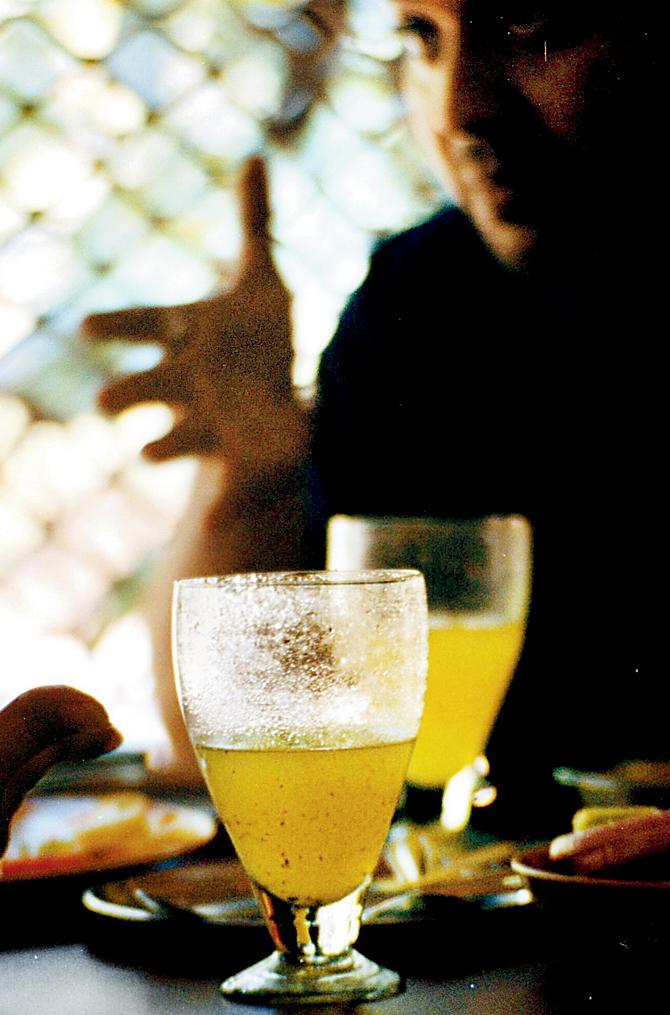
A chilled glass of aam panna at Samovar
Samovar, which will close down on March 31, after a long battle and court case with the trustees of the Jehangir Art Gallery, has fed artists, writers, students, lawyers, office workers, doctors... the city itself, in fact. It remained unassuming for all that. The cane chairs, the tables squeezed a bit too close, the chutneys in stainless steel bowls and with paper kites or handicraft parrots for decor. Samovar occupied a verandah which overlooked the gardens of the Prince of Wales museum or the Chhatrapati Shivaji Maharaj Vastu Sangrahalaya as it is now known. The space was part of its cachet. Samovar did not try to be what it was not. And it lost nothing of its true self.
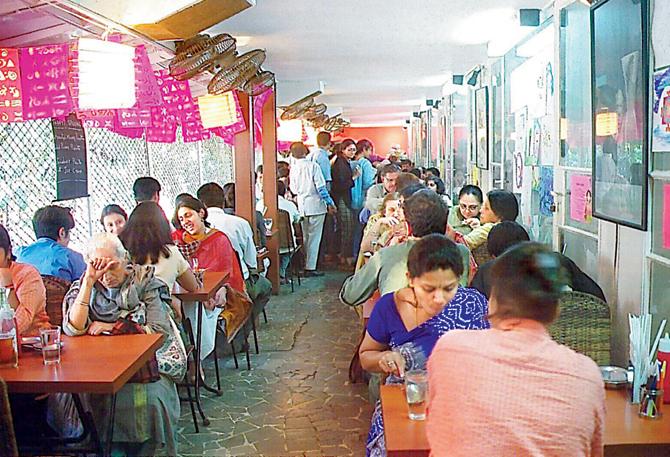
Pakoras and mint tea, or beer and chips, Samovar had it all
You could still pop in for pakoras and mint tea at 5 pm. Or beer and chips a little later, before they closed. And if it was lunch you wanted, then the menu spread out like a comfortable razai that has taken your shape over years of use. Would it be the Goan prawn curry today? Or the mutton cutlets? Or the stuffed parathas with dahi vada? Rajma-chawal? After Samovar invented it, the strawberry parathas became a staple every strawberry season and were not to be missed. The staff was familiar and if some were grumpy, it was part of the whole experience. Usha Khanna, the owner, was always gracious, friendly, kind and indomitable.
The prices remained comparatively low and that added to the romance. Plastic money was frowned upon. How many city landmarks have lost themselves by needless “improvement” and “upgrading”, by trying to cater to a new clientele and losing the old without gaining anything? There are enough bland eateries and shops and areas which blend into each other from locality to locality, offering the familiarity of traffic cones.
It is hard to understand just what the trustees of the Gallery had against Samovar. Its presence was a magnet, it worked as a cafe for artists who displayed at the Gallery, it gave character to the area. The area it occupied was tiny. Today the Kala Ghoda area is celebrated as an art and heritage “precinct” (a word imported into India in this millennium probably by someone addicted to police serials on TV). It will lose a vital part of its essence with the departure of Samovar.
Over the last few years, Mumbai’s cache of special places has been plundered. We lost Wayside Inn at Kala Ghoda to an entrepreneur with no sense of history or heritage (or perhaps just no sense). Who cared then for Mario Miranda’s cartoons on the walls or the fact that Dr BR Ambedkar is supposed to have written some of the Constitution there?
Or the fabulous soufflés and the grumpy waiters? We lost Café Naaz on Malabar Hill to a dogged and disinterested municipal corporation. It did not care for the best views of Marine Drive and the bay, of the simple Irani food and the unmatchable ambience. No, the corporation would prefer to destroy the maidans, the zoo and Aarey Milk Colony than to protect and preserve Mumbai’s character. And now, Samovar.
Those of you who can should make a pilgrimage trip or a first time trip even. You must try the stuffed parathas — aloo and whatever is in season. Soak in the atmosphere and imagine India’s best artists sitting at your table grabbing a bite or chatting with friends.
Because of our three score years and ten, well, days at Samovar will not come again. No young lovers sharing a plate of pakoras, no staring at the monsoon rain so close but not enough to damage you, no fighting with colleagues over the last bottle of beer, no feeling at home when home is far away. No Mumbai, at this rate. Enjoy that plastic hamburger.
 Subscribe today by clicking the link and stay updated with the latest news!" Click here!
Subscribe today by clicking the link and stay updated with the latest news!" Click here!







